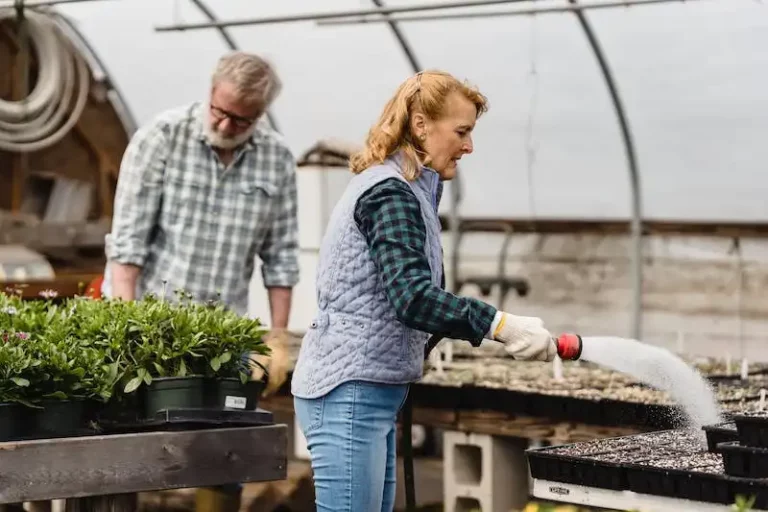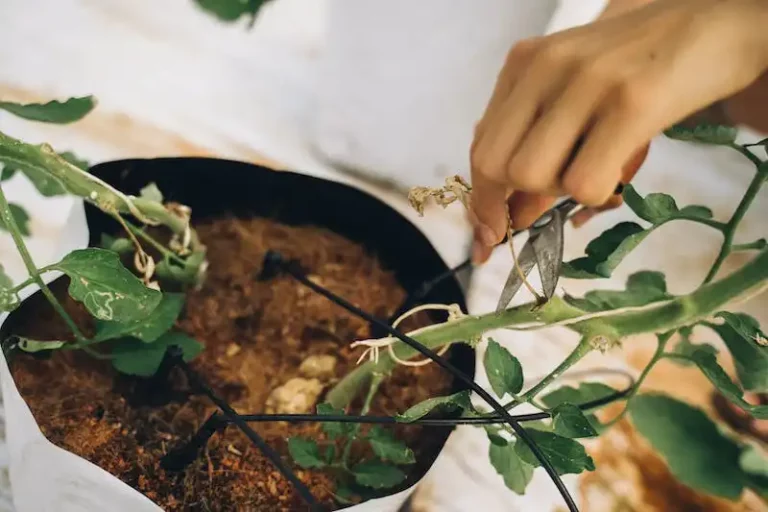When it comes to growing vegetables, bok choy is an obvious choice for many gardeners. This leafy green vegetable is not only delicious but also packed with nutrients. With its long history in Asian cuisine, bok choy is likely to be a favorite in your kitchen as well.
Planting bok choy is a relatively easy process. The first step is to prepare the soil. Bok choy prefers a well-drained, fertile soil that is rich in organic matter. You can start the seeds indoors, then transplant them into the ground once they have reached a suitable size.
When planting bok choy, make sure to space the plants apart, as this will allow them to grow to their full size. Thin out any overcrowded seedlings to avoid competition for nutrients. Bok choy grows best in cool-season areas and can be started in both spring and fall.
To ensure the best conditions for your bok choy, consider using a layer of mulch to protect the plants and conserve moisture. This will also help to regulate soil temperatures and prevent weed growth. Bok choy is an ideal companion plant and can be grown alongside other vegetables.
When it comes to caring for your bok choy plants, proper watering and fertilization are essential. Bok choy prefers a moist soil but not one that is waterlogged, so be sure to water lightly and regularly. A balanced fertilizer can also be applied to encourage healthy growth.
Harvesting bok choy is a rewarding experience. The leaves can be picked when they are young for a tender and sweeter flavor. As the plant matures, the outer leaves can be harvested and the inner ones left to grow. Bok choy can be cooked in various ways and is a popular ingredient in stir-fries, soups, and salads.
Overall, growing bok choy is a relatively simple and rewarding process. With a little care and attention, you can enjoy a bountiful crop of this nutritious vegetable. Whether you are a seasoned gardener or just starting out, bok choy is a great choice for your garden.
How to Grow Bok Choy
Bok choy, also known as Chinese cabbage or Pak choi, is a leafy green vegetable that is easy to grow and packed with nutrients. Follow these steps to successfully grow your own bok choy in your garden.
1. Sowing Bok Choy Seeds
Start by sowing bok choy seeds directly into well-drained soil. It is best to sow the seeds during the spring or fall seasons, as bok choy prefers cooler temperatures. Plant the seeds about ¼ inch deep and space them about 4 inches apart.
2. Watering and Lighing
Bok choy plants need consistent watering to thrive. Water the plants regularly, making sure the soil remains moist but not waterlogged. Bok choy prefers full sun, but it can tolerate some shade. Make sure the plants receive at least 4-6 hours of direct sunlight each day.
3. Providing Nutrients
Bok choy plants require a good source of nutrients, such as calcium, to grow properly. You can amend the soil with well-rotted manure or compost before planting to provide these nutrients. Alternatively, you can use a balanced organic fertilizer during the growing season.
4. Weed Control
Keep the area around the bok choy plants free from weeds. Weeds can compete for nutrients and water, hindering the growth of your bok choy. Regularly remove any weeds that start to appear.
5. Pest and Disease Control
Bok choy is prone to common pests such as aphids, cabbage worms, and flea beetles. To prevent pest damage, you can use floating row covers or insecticides. Also, practice good garden hygiene by removing any diseased or damaged plants to avoid the spread of diseases.
6. Harvesting Bok Choy
Bok choy typically matures in about 45-60 days after sowing. Harvest the bok choy while the leaves are still young and crispy. Simply cut the leaves at the base of the plant, leaving the root intact. You can harvest the entire plant or just the outer leaves, allowing the inner leaves to continue growing.
7. Storing and Cooking Bok Choy
Bok choy can be stored in the refrigerator for up to a week. Make sure to wash the leaves thoroughly before storing. Bok choy is a versatile vegetable that can be used in various recipes, such as stir-fries, soups, and salads. The leaves have a sweet, mild flavor that pairs well with many other ingredients.
By following these steps, you can enjoy fresh and nutritious bok choy from your own garden. Give it a try and discover the delicious flavors and health benefits of growing your own bok choy!
About Bok Choy: Why It’s Worth Growing
Bok choy, also known as Chinese cabbage, is a popular vegetable that many gardeners want to grow in their own backyard. It is a cool-season crop that can be planted earlier in the spring than other vegetables. Bok choy forms a compact rosette of smooth, thick, dark green leaves that can be harvested at various stages of growth. What makes bok choy unique is its ability to be harvested as a baby green or allowed to grow into a mature plant. The thick, white stems have a tender and crunchy texture and the dark green leaves are similar to kale.
Why should you consider growing bok choy? Firstly, it is a versatile vegetable that can be used in a variety of dishes. You can add it to salads or use it in stir-fried dishes. Bok choy is a staple in many oriental recipes, making it a great addition to any Asian-inspired meal. Secondly, bok choy is easy to grow. It can be planted directly in the ground or started indoors and transplanted. Bok choy plants have a low tendency for pests and diseases, although they can be susceptible to aphids and white spots. This makes it a great choice for beginner gardeners who want to try their hand at growing leafy greens.
When planting bok choy, select a sunny spot in your garden or on your farm. Bok choy prefers full sun but can tolerate some shade. The soil should be well-drained and rich in organic matter. It’s important to note that bok choy is a cool-season crop and does not tolerate heat well. It performs best when planted in early spring or fall when temperatures are cooler.
To plant bok choy, you can start with either seeds or transplants. If you choose to start from seeds, sow them directly in the ground about 1/4 inch deep. Keep the soil evenly moist until the seeds germinate, which usually takes 7-14 days. If you opt for transplants, you can start them indoors 4-6 weeks before the last frost date. Transplant the seedlings outside once they are about 4-6 inches tall.
After planting, it’s important to thin the bok choy plants to ensure proper spacing. Thin the seedlings to about 6-10 inches apart for mature plants and 2-4 inches apart for baby greens. Thinning is necessary to allow enough space for the plants to grow and prevent overcrowding. You can use a sharp knife or scissors to thin the plants.
Bok choy is a relatively low-maintenance plant. It requires a consistent supply of water, especially during hot and dry periods. Mulching can help retain moisture in the soil and prevent weed growth. Fertilizing is generally not needed, as bok choy grows well in fertile soil. However, if your soil is lacking in nutrients, you can apply a balanced fertilizer according to the instructions on the package.
Harvesting bok choy is a simple process. You can start harvesting the outer leaves when they are about 6-8 inches long. Cut the leaves off with a sharp knife, leaving behind a few small leaves in the center to allow the plant to continue growing. You can also harvest bok choy as a whole plant by cutting it off at ground level. It’s best to harvest bok choy in the morning when the leaves are crisp and the flavor is at its peak.
To store bok choy, you can wrap it in a damp towel and place it in a plastic bag in the refrigerator. It can be stored for up to a week. If you have a surplus of bok choy, you can blanch and freeze it for longer storage.
In conclusion, bok choy is a versatile and easy-to-grow vegetable that is worth adding to your garden. Whether you want to enjoy it in salads, stir-fried dishes, or soups, bok choy is a nutritious and flavorful addition to any meal. Its crunchy texture and mild flavor make it a favorite among both home cooks and professional chefs. So why not give bok choy a try and experience the joy of growing your own fresh greens?
Bok Choy Varieties TO TRY
When it comes to bok choy, there are several different varieties that you can try growing in your garden. Here is a guide to some of the most popular bok choy varieties.
1. Green Bok Choy: This is the most common type of bok choy and is often found in grocery stores. It has dark green leaves and a crisp texture, making it perfect for stir-frying or adding to soups.
2. Baby Bok Choy: As the name suggests, this variety is smaller in size and is often harvested when the leaves are young and tender. Baby bok choy is great for quick stir-fries or salads.
3. Shanghai Bok Choy: This variety has thick, dense leaves that are more upright than other types. It has a mild flavor and is commonly used in Chinese cuisine.
4. Tatsoi Bok Choy: Tatsoi has spoon-shaped leaves that are dark green and glossy. It has a slightly spicy flavor and is often used in salads or stir-fries.
5. Red Bok Choy: This variety has vibrant red leaves that add a pop of color to your garden and dishes. It has a mild flavor and can be used in a variety of recipes.
6. Choy Sum: While not technically a type of bok choy, choy sum is often grouped together with bok choy due to its similar appearance and taste. It has long, slender stems and tender leaves that are great for stir-frying.
When selecting which bok choy varieties to try, consider factors such as flavor, size, and growth habit. Some varieties are better suited for certain cooking methods, while others may be hardier and more resistant to pest infestations.
To ensure successful growth, make sure to select a location that receives partial sun and has well-draining soil. Bok choy plants prefer to be watered consistently, but avoid over-watering as it can lead to root rot.
When planting bok choy, space the plants about 10-12 inches apart to allow for proper growth. Thin out the seedlings once they reach a few inches tall, leaving only the strongest ones to mature.
As for fertilizer, bok choy plants don’t require heavy feeding. A general-purpose organic fertilizer can be applied lightly every few weeks to provide nutrients.
Keep an eye out for common bok choy diseases such as damping off and downy mildew. Avoid planting bok choy in the same spot each year to prevent the build-up of diseases in the soil.
As you harvest your bok choy, it’s worth noting that some varieties have better storage capabilities than others. Floating row covers can be used to protect the plants from flying pests and to create a greenhouse effect for quicker growth.
In terms of companion crops, bok choy pairs well with vegetables like kale and spruce. Avoid planting bok choy near crops that are heavy feeders or prone to similar diseases.
So which bok choy varieties will you choose to try in your garden this spring? With the right care and attention, you’ll be enjoying fresh, homegrown bok choy in no time!



